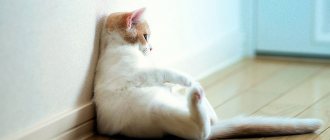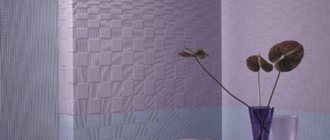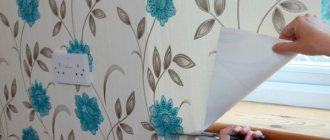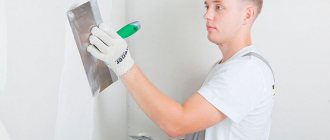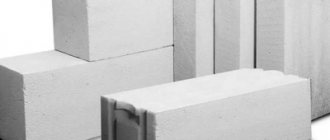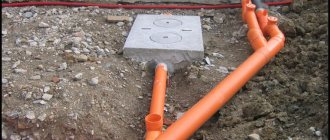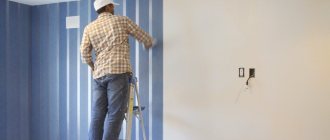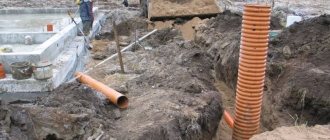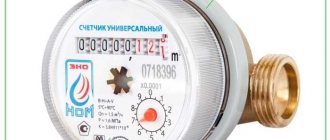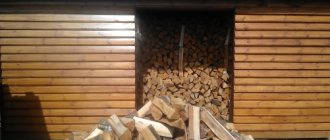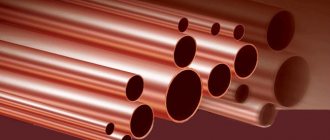Painting non-woven fabric is distinguished by its smooth texture; the material is non-woven, and has many similar parameters to fiberglass material. It differs from fiberglass in thickness, it is thinner. This thickness is achieved by using polymer binders for the production of cellulose and textile fibers. The features of the material will be discussed in detail below.
Purpose of painting non-woven fabric
Non-woven canvas is used as a reinforcing layer; the surface can be painted on top of it, or other decorative materials can be installed. It is similar to painter’s fiberglass, which in everyday life is called “cobweb”, and helps to contain cracks on the surface.
The application is associated with the desire to obtain a durable and highly resistant finish. Can be used in apartments, private houses, office buildings and other structures. Separately, they note the ease of its installation, after which it will be possible to update the finish on top of the canvas several times.
Non-woven canvas is used as a reinforcing layer; the surface can be painted on top of it, or other decorative materials can be installed.
Advantage of the material (declared by the manufacturers)
Non-woven fabric for painting is environmentally friendly and does not harm human health, so it can be used in any room. Security explained:
- Absence of PVC;
- The material allows liquid to pass through like paper products;
- It is difficult to ignite, for this reason it is not classified as a fire hazard.
Another plus is the ability to cover surface imperfections, so this is a good option if you intend to paint the walls, glue wallpaper or install other finishing materials.
Non-woven fabric for painting is environmentally friendly and does not harm human health, so it can be used in any room.
It helps to create unusual design ideas on the surface using plaster and putty mixtures. In addition, it has tensile strength. It is for this reason that it is similar to reinforcing products. Able to hide and also retain cracks, it is also noted that non-woven fabric:
- Does not stretch;
- Water does not cause shrinkage of the painting interlining for painting;
- It does not change its structure and does not deteriorate from exposure to humidity and moisture, it is only important to install it according to the rules.
Manufacturers claim that the material can provide a strong connection with many types of substrates:
- Plaster, it should not crumble;
- Plasterboard sheets;
- Old wallpaper or paint that could not be removed;
- Plastic or fiberglass;
- Wooden slabs or chipboards.
It is impossible to say with certainty that such a solution will help to completely avoid problems with these surfaces, because other difficulties may arise with the old finish and poorly adhering base. In practice, it has been found that it is better to choose fiberglass for damaged walls; in the end it will cost less due to a better result.
Non-woven fabric helps create unusual design ideas on the surface using plaster and putty mixtures.
To successfully use this building material, it is necessary to bring the base to the following parameters:
- The color should be neutral;
- Lead to a homogeneous, smooth, even state;
- Be completely dry.
The canvases are distinguished by their surface stability, so applying a new coating is allowed several times. It will be easy to remove the outdated finishing material from it, but the non-woven canvas itself will not be damaged during this process.
The same can be done if the base was painted; you can repaint the surface many times. If you need to remove the canvas itself for painting, then dismantling it is not difficult. In addition, they note the properties: light resistance, sound insulation, lasts up to 25 years. The downside is that it attracts dust on the embossed surface, and the embossed texture is weak to mechanical damage.
The canvases are distinguished by their surface stability, so applying a new coating is allowed several times.
Compound
In the production of non-woven material, artificial fibers are used. The main composition of the interlining fabric is viscose. Since the material is non-woven, it does not have a transverse or longitudinal thread, however, craftswomen prefer to cut the reinforcing fabric lengthwise, since it stretches slightly in the transverse direction. According to GOST, adhesive interlining fabrics are marked like other fabrics. That is, the manufacturer must indicate the composition and care rules.
The paper-like substance is considered semi-synthetic. That is, cellulose fibers are diluted with polyester. However, 100% viscose varieties are also available on sale. By chemically modifying the fibers, it is possible to increase strength and wear resistance. Rigid modifications are characterized by high dimensional stability, are well painted and retain color, and are resistant to dirt.
How to choose painting non-woven fabric
If the choice is made in favor of this material, then you should pay attention to the selection of high-quality rolls. As mentioned earlier, painting non-woven fabric is environmentally friendly, so it is worth asking the store for certificates of quality and compliance.
You should check its texture, it feels perfectly smooth to the touch, without any flaws, the edges are also smooth. It should not be possible to stretch it, the texture is elastic. They check the composition, there should be no chemical elements present, and there should not be any other unclear designations. The consultant must professionally answer questions about the material, otherwise you should not trust him.
You should check its texture, it feels perfectly smooth to the touch, without any flaws, the edges are also smooth.
Reviews about safety of use
Painting non-woven fabric, reviews of which may help you make the right choice, is made from raw materials mainly of natural origin. The production process does not use heavy metals and their compounds, formaldehydes, mineral fibers or organic solvents. Users like that this repair material is non-toxic and does not release harmful substances into the environment. The material is characterized by high antifungal resistance, which helps combat the occurrence of mold. The repair canvas is characterized by high vapor permeability, which ensures a healthy indoor microclimate.
Density
In addition to the important points described above that you should know when choosing non-woven fabric, you should clarify the level of its density. The maximum density reaches 160 grams per square meter, the minimum density is 110 grams. The color is white.
The maximum density reaches 160 grams per square meter, the minimum density is 110 grams.
Features and advantages of non-woven canvas gluing technology
The process of installing non-woven fabric for painting is easy; you start by applying wallpaper glue to the base itself, then sheets of reinforcing material cut to the size of the surface are applied to the adhesive layer. On the surface, smoothing and distribution of the product occurs quickly and without problems. Therefore, a beginner can easily carry out the entire process without turning to a professional for services.
This technology for installing non-woven fabric helps reduce the consumption of adhesive solution. But first, the surface should be properly prepared so that it is free from flaws and smooth. The mixture is selected based on the condition of the surface.
The adhesive solution is prepared thick, the wall is carefully coated with it, the interlining itself should be mounted using a plumb line so as not to be mistaken in its evenness. The strips are glued end to end and pressed to secure them well.
If the strips are too long, then carefully cut the excess part with a sharp knife. When the drying period specified by the material manufacturer has passed for the adhesive solution, they proceed to further finishing work.
On the surface, smoothing and distribution of the product occurs quickly and without problems.
Painting the walls
The most painstaking way is to paint the walls without using paintable non-woven fabric/paintable wallpaper/fiberglass. The walls are rendered “in glass” - into a perfectly flat and smooth surface without scratches. This is achieved by repeatedly alternating layers of finishing putty (shitrok is the most popular now, which is where “shitrot” comes from) and sandpaper.
But this method is not particularly recommended for apartments in new buildings, because... the house is still shrinking and cracks may appear. Therefore, in such situations, they use a base for paint, which can “hold” small cracks, hide scratches from sandpaper and hairline cracks, and there is no need to carefully paint the walls under it. Let's talk about this method.
1. Painting non-woven fabric Sold in large rolls one meter wide and about 25 long, smooth without texture. It comes in different densities, the smaller the thinner and lighter it is. The higher the density, the heavier it is (more difficult to stick), but the stronger it is. The fabrics are glued end-to-end using non-woven glue. After gluing it should be given enough time to dry before painting. Glue them end-to-end, it’s better to let them separate a little than to end up with a “croaker”; you can always fill the seam with putty. Then the steps: 1.1 in one layer, paint only the seams. 1.2 sew the seams over the paint, without getting into unpainted areas. We remove excess putty with a spatula, running along the seam without strong pressure. 1.3 we sand, removing the extra “bump” and smoothing. if necessary, repeat steps 1.2-1.3 again if after sanding you could feel the seam with your finger. 1.4 paint the walls two layers. And now for him all this rigmarole? So that not a single seam is visible at the finish and the walls look like “just painted walls” and not non-woven fabric. Paint is needed so that when sanding the interlining itself is not damaged and its texture is preserved, paint makes it stronger. But this is a method either for perfectionists (yes, yes, that’s exactly what I did) or for those who messed up when gluing non-woven fabric (and it’s easier to mess up with a dense one))) If there is no such desire and you want something simpler and faster, then after gluing and Once dry, you can prime and paint.
2. Fiberglass (“spider web”) It’s a rather unpleasant thing for your hands, so you don’t need to work with it unless you’re wearing gloves, otherwise you’ll end up with a lot of scratches later))) The thin one is glued end-to-end, after drying it’s scratched + sanded two circles and then primed- puts on makeup.
3. Paintable wallpaper. There are different textures and patterns. In general, they are no different from ordinary non-woven wallpaper, except that they can be painted in any color and subsequently repainted. Glue, prime and paint in 2 layers.
Tricks: 1. For the first option, a good primer can also help. For example, BM has an acrylic primer “fresh start”. Slightly whitish and thick, can be tinted. Thanks to its texture, it fills scratches and smoothes out unevenness a little. After this, paint consumption is noticeably reduced.
2. For the second option, you can use the same glue for non-woven fabric as a primer. Surely it will remain! Dilute it a little with water and that’s it - the primer is ready
What is the difference between painting non-woven fabric and fiberglass?
To understand exactly which of the similar materials is better to choose - fiberglass or non-woven fabric, you should study their differences and features of use. The first type of reinforcing product does an excellent job of covering surface imperfections, containing and preventing the appearance of cracks. Suitable for use as a base for painting surfaces or gluing wallpaper. It will give strength to the wall or ceiling on which it will be glued.
It is most often used in buildings where durability and wear resistance are not required, such as low-cost office spaces. The non-woven look is a more effective option for finishing walls in a residential building or apartment, where the owners often want to make repairs without spending a lot of time on it.
Also, painting non-woven fabric is distinguished by its environmental composition, good vapor permeability, and fire safety. It is easier to carry out repair work with it; its resistance to moisture allows you not to be afraid of changes in structure and deformation over time.
Painting non-woven fabric has an environmentally friendly composition, good vapor permeability, and fire safety.
Let's figure out which is better: vinyl wallpaper or non-woven wallpaper
Which wallpapers are the best - those that are correctly selected taking into account their use. Take an individual approach to the choice of material for each room, paying attention to the following factors - room humidity, the expected degree of contamination of the wallpaper during use, the presence or absence of unevenness on the walls and small children and pets. For wet rooms, it is better to choose dense materials.
They have to:
- Don't be afraid of water;
- Easy to clean from dirt;
- Smooth vinyl flooring works great.
For a children's room and a place to rest at night, it is better to choose natural and environmentally friendly non-woven wallpaper. Uneven walls will be hidden by foam vinyl. If you have perfectly smooth walls, the living room will be decorated with silk-screen printing. For rooms located on the south side, vinyl wallpaper with a hard coating that does not fade from sunlight is suitable.
Instructions for gluing painting non-woven fabric
The main advantage of canvas for painting or wallpaper is the ease of installation; it is simply glued to the wall. For this purpose, it uses wallpaper glue; there are no special requirements for wallpaper glue, the material is not heavy. The ceiling or wall should be coated; the ability to work with the ceiling is also a plus of the product.
Cutting strips is easy, the material can be measured very accurately, and on the surface it quickly straightens, this is due to its elasticity property, which you need to be sure of when purchasing in order to choose a quality product.
It is recommended to use it on a leveled surface; you do not need to remove the well-adhering old coating. The glued interlining will serve for many years; you can glue it to it or paint the surface with new wallpaper/paint if you want to update the interior. If the decision is made to carry out a major overhaul, it will be easy to remove the stripes; removal takes place in a dry state.
Further painting can be carried out using the standard method using a roller or spray gun. But, if dark colors are applied, then it is better to repaint them no more than three times.
Painting can be done using the standard method using a roller or spray gun.
Painting non-woven fabric is a high-quality product that will help make the wall more durable, and will reduce time and expenses for updating surface finishes, without harming human health. You can glue it to the wall or ceiling with your own hands, without resorting to the services of specialists, which will significantly save the family budget. But in order to get all the declared characteristics, you should choose the brand with special attention.
Difficulty of installation
This criterion is individual, however, as experts note, vinyl is more difficult to glue. Since the rolls are small and have a decent weight. In order for the product to stick to the wall, it is necessary to level it with a special spatula for several minutes.
Non-woven wallpaper is easier to install. Since the reverse side consists of cellulose, which quickly sticks to the wall. It should also be noted that the rolls are wide, which greatly facilitates the gluing process.
Non-woven fabric is easier to glue to the wall
Painting non-woven fabric: characteristics and application
| Encyclopedia map
Non-woven canvas has become a good replacement for the “cobweb” - painting fiberglass. Non-woven fabric is used when renovating apartments, offices and other premises where it is necessary to ensure durability and wear resistance. Painting non-woven fabric is an environmentally friendly material. It does not contain PVC, allows moisture to pass through like paper wallpaper, is difficult to ignite, and is therefore considered fireproof. When choosing, pay attention: non-woven fabric should not stretch, the texture should be perfectly smooth and soft, and particles of foreign origin should not appear on it. The edges should be smooth and the material should have increased elasticity. Another important advantage of the material is its tensile strength. Non-woven canvas ideally hides defects in treated surfaces, restrains and prevents small and thin cracks in the wall, and serves as a kind of reinforcing material. Non-woven fabric does not stretch, will not shrink when wet, does not deform and does not change the structure when re-wetting and subsequent drying. Non-woven canvas adheres firmly to almost any surface. This could be crumbling plaster, drywall, the base of old wallpaper or old paint that cannot be removed; plastic or fiberglass, wooden boards or chipboard. All types of materials are subject to the same requirements for the conditions for gluing the canvas - the surface must be neutral in color, uniform, dry, smooth and even. Painting non-woven fabric has surface stability, which allows decorative coatings to be applied repeatedly. When carrying out repeated repairs, it is not difficult to remove the wallpaper glued to the material. The interlining itself is not damaged. Canvas can be pasted over multiple times. A similar situation is with painting walls. If the painting interlining has been painted, it can be repainted regularly. At the same time, having decided to carry out a major overhaul or create another surface covering, the master can easily dismantle the non-woven canvas. It is removed dry. The material is easy to stick to the surface to be treated. Wallpaper glue is applied directly to the wall, after which the painting non-woven fabrics are applied dry to the surface treated with glue. You can easily and accurately adjust the strips relative to each other. When gluing non-woven canvas onto the surface of the walls, it can be easily smoothed and straightened, even if it was stored deformed in a roll. This technology of gluing the material guarantees economical consumption of wallpaper glue and time for work. Before gluing the canvas, it is necessary to prepare the base. Depending on its type, it can be putty, crack reinforcement, etc. After processing and cleaning, the painting non-woven fabric is glued using a thick wallpaper compound. Sheets of painting non-woven fabric are placed plumb and end-to-end in a thick layer of glue, then pressed. Excess at the joints of the floor, ceiling, window or door openings is cut off with a sharp knife. After drying, wallpaper is glued onto the non-woven canvas, dispersion paint or other decorative material is applied. |
Positive reviews
Painting canvas is an intermediate option between glass wallpaper and cobwebs in terms of cost and properties. But the manufacturing process uses the same raw material – fiberglass. According to users, the main positive feature is the ability of the material to undergo significant stretching, which distinguishes it from fiberglass analogues.
Painting non-woven fabric can be successfully used in places where large cracks have formed and there is a possibility of their development. As buyers emphasize, the material is produced in rolls of convenient size - 25 meters each. Among the advantages, home craftsmen and professional builders highlight the moderate cost and insignificant consumption of painting materials, which are applied during the decorative finishing process. Another advantage is the ability to stretch, which distinguishes the material from similar devices. The painting non-woven fabric has a smooth texture and also guarantees low glue consumption.
Non-woven canvas for painting - features of choosing the material and working with it
Anyone who has ever dealt with renovation work knows how difficult it is to achieve a perfectly smooth surface, especially if it will be painted.
Paint can radically change a room, but at the same time, if there are flaws on the surface, they will be visible to the naked eye. This is why non-textured non-woven painting linen for painting is so popular - with its help the surface becomes perfectly smooth.
Non-woven fabric is very similar to fiberglass, but these are completely different materials
Overview of the main features of the material
To understand the features of working with non-woven coating for painting, you need to understand what this material is and what criteria high-quality samples must meet.
Manufacturing technology
Non-woven paper for painting consists of the following main components:
- The basis is long-fiber cellulose - a strong and reliable material.
- The top layer is made of the finest polyester fibers, thanks to which the surface is so smooth and durable.
- The binding component is a polymer acrylic composition, which gives the coating a lot of positive properties: lack of linear expansion, resistance to humidity and temperature changes, and a very long service life.
The surface of the coating resembles a drawing paper, but its structure is much smoother and softer. This coating is suitable for any room, it is completely environmentally friendly and does not emit any harmful substances during operation. That is why it can be used even in children's rooms, kitchens and bathrooms.
Criterias of choice
High performance properties of this type of finish can only be guaranteed when the material is made from high-quality raw materials and in compliance with numerous standards.
It is quite simple to distinguish a high-quality product from a low-quality one:
- The main indicator of quality is a perfectly smooth, silky structure. Any extraneous inclusions, irregularities and other defects indicate that the product was manufactured in violation of technology. It is from the surface that you should start choosing the optimal option.
- Leading manufacturers pay great attention to the ideal processing of edges, since these are the most problematic areas - flaws and tears significantly worsen the appearance of the surface.
- Another indicator of high quality is the elasticity of the material; if there are traces of bending on it, it is better to choose another sample that is more resistant to damage.
- The composition should not contain any foreign additives. To ensure this, you need to ask the seller to provide a quality certificate. If it is not available, it is better to refuse the purchase, since all products in this group must undergo certification.
- Another important factor is the lack of stretch in any direction. It is very simple to check this; you need to pull any section of the material in different directions; if it is even slightly stretched, its strength is quite low.
Unlike fiberglass, construction non-woven fabric for painting is almost opaque; any visible fibers are a sign of low quality
Advice!
It is best to choose products from well-known brands or read reviews about a particular material on construction forums on the Internet.
As a rule, the necessary information can be found fairly quickly.
Which ones last longer
This criterion largely depends on the intensity of operation. It is recommended to cover a room with vinyl if it is a walk-through room and there are frequent temperature changes. Therefore, vinyl is often used for the corridor, kitchen and hallway. The service life is much longer than non-woven fabric. Since vinyl is thicker and easily withstands mechanical loads.
The non-woven fabric is also of high quality and durable, however, in case of minor scratches, the damaged area should be re-glued, as it will be difficult to paint the wall. Therefore, it is not used in the kitchen and hallway. With careful use, non-woven fabrics serve for a long period, but it is recommended to periodically paint them to renew the color.
Vinyl is easy to clean, making it ideal for the kitchen
Features of the work
To achieve a positive result, just purchasing good material is not enough; it is important to carry out all the work in accordance with the technology. In fact, everything is quite simple, but you should still remember the basic rules.
Preparatory stage
At this stage, you should first prepare all the necessary materials:
- Sufficient amount of non-woven covering with a small margin just in case.
- Glue for non-woven coverings, and remember that its consumption will be slightly higher than when working with wallpaper coverings.
The price of good glue, as in the photo, is quite high, but in no case is it worth saving on it
- If the surface to be finished has uneven surfaces, they should be repaired using putty; it is best to choose an acrylic composition.
- To level the material when gluing sheets with your own hands, it is better to use a special spatula.
Using this device it is very convenient to smooth the surface and expel air from under the material
Next, the surface should be prepared; within this stage, the following work is carried out:
- All debris and dust must be removed. After this, the wall or ceiling to be finished is carefully inspected for damage and flaws.
- If there are uneven surfaces, they must be repaired using putty. After it dries, it is necessary to sand it using a special block with replaceable sanding sheets.
Important!
If you are going to cover a wall finished with plasterboard, then you need to putty all the seams and fastening points.
In this case, it is recommended to use fiberglass mesh on the seams for additional protection against cracking.
Leveling the plasterboard surface is very simple
- The last type of work is priming the surface; any deep penetration composition is suitable for this.
Carrying out work
Even many experienced builders do not know what the technology is - painting non-woven fabric for painting did not exist a decade ago.
But the work is quite simple, they are somewhat reminiscent of wallpapering, but there are some features:
- First of all, the adhesive composition is prepared, this is done as recommended by the instructions on the package.
- Remember that the solution should not be applied to the material itself, but to the surface to which it will be glued. The easiest way to do this is with a special brush.
- It is better to carry out gluing with an assistant; first, the sheet is carefully applied to the surface, after which it is leveled using a spatula. The next sheet is located nearby, with special attention should be paid to the joints. Due to the fact that the material does not stretch, leveling the surface will not be difficult.
It is more difficult to glue interlining for painting on the ceiling than on the walls
- After finishing the work, the surface should be allowed to dry for at least a day, or better yet, wait a few days, after which you can apply paint. Additional puttying of the surface is not required; this distinguishes interlining from fiberglass.
After painting, the result is a perfectly smooth, pleasant-to-touch surface.
Almost any paint is suitable for painting. If there are metal elements on the surface, then they should also be painted; fire-retardant paints for metal Polistil are well suited; they, like non-woven fabric, do not support combustion and significantly increase the level of fire safety of the room.
If you need to achieve the effect of a steel surface, then Zinga electrically conductive paint is an excellent solution: the coating is shiny and very durable.
Details
What adhesive composition to use
If you do not want to re-glue the ceilings several times, then you should immediately buy a special adhesive composition at a hardware store or on the market in order to get excellent gluing of non-woven wallpaper. If you use a starch custard composition, it will not hold such heavy fabrics. As a result, you will simply ruin the ceiling wallpaper, and you will never be able to glue it to the ceiling.
The special adhesive composition is very viscous and thick, so that the wallpaper for painting quickly begins to set and adheres perfectly to the ceiling surface. It must be applied directly to the ceiling surface, and then carefully apply the wallpaper for the ceiling and align it end-to-end with the previous strip. Usually the mixture is sold in dry form, and at home you will dilute it yourself with water before starting repair work for a short period of time and the adhesive composition will be ready.
We suggest taking a closer look at how to prepare it:
- You will definitely need a container with a wide neck. Most often, a simple bucket is used for this. Next, you need to read the instructions, how much water is needed for this amount of dry mixture and pour exactly this amount into the bucket.
- Take a large spoon and make a swirl in a bucket containing water, stirring the water. Next, carefully pour the mixture into it. It should be mixed evenly with water, there should be no lumps, otherwise lumps will appear when the wallpapering of the ceiling is finished.
- After ¼ hour, take the solution and stir it thoroughly, and that’s it, the composition is ready!
Previously, it was generally accepted that ceilings must be whitewashed and nothing else, since the walls will breathe well and the microclimate of the room will be the most favorable. At the moment, there are many materials on the market, as well as non-woven wallpaper on a rigid and strong base. If you use them to correctly decorate the ceiling, then if you wish, you will not have to think about major repairs for several years.
Tools and materials
Such tools are ideal for your work and you won’t need the rest. Before gluing, you need to go to a construction supermarket and you will find everything you need there.
